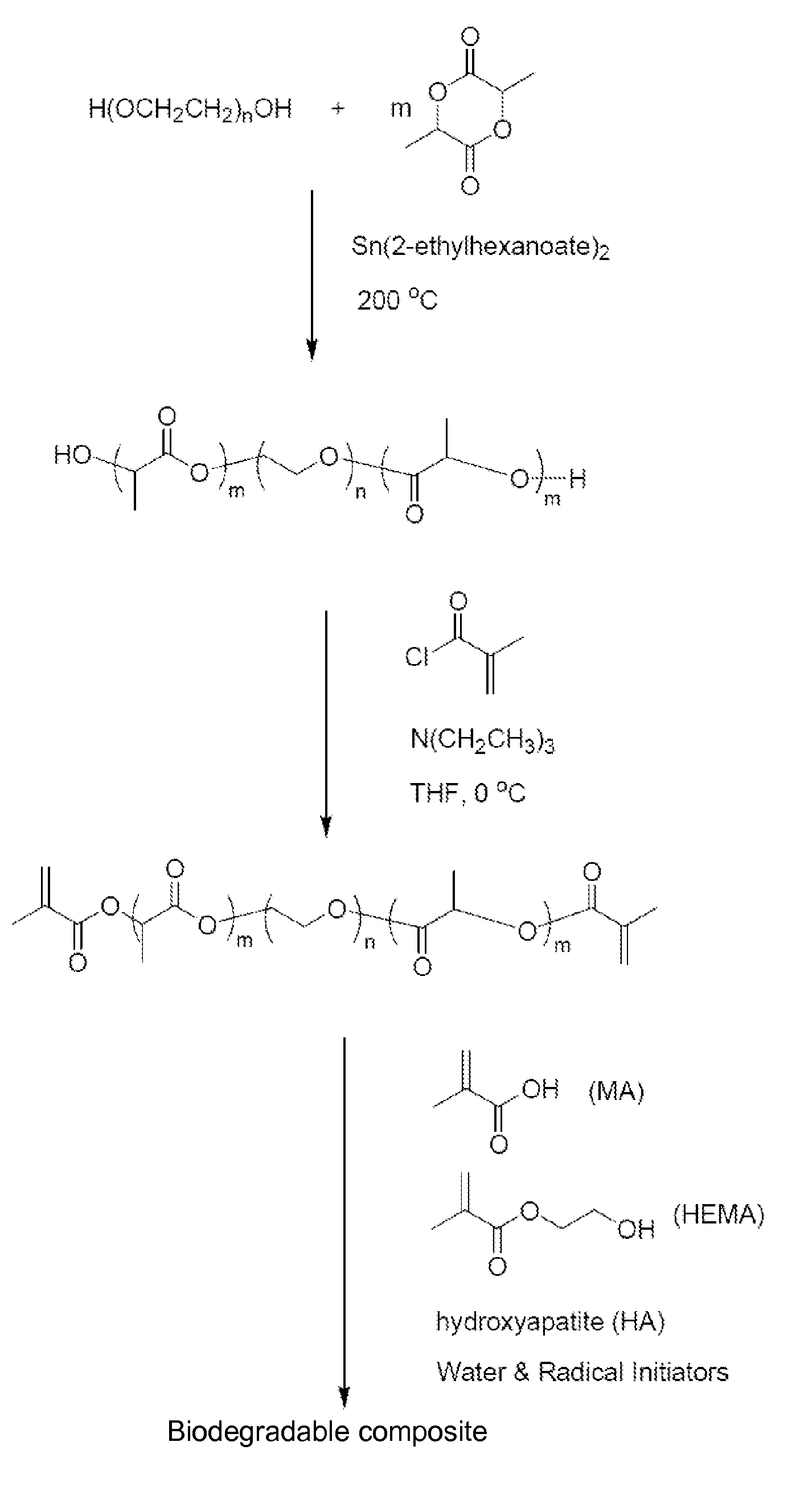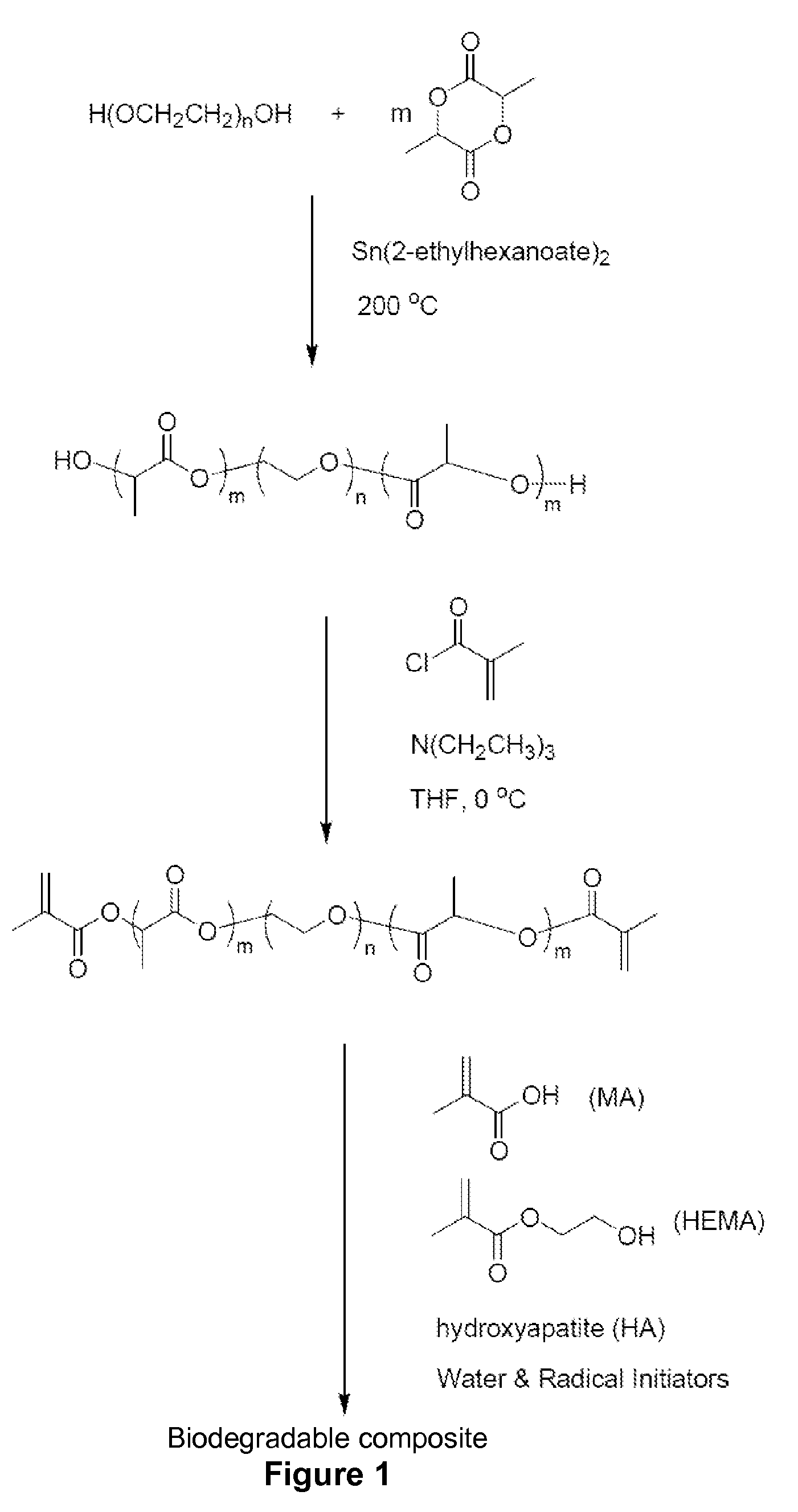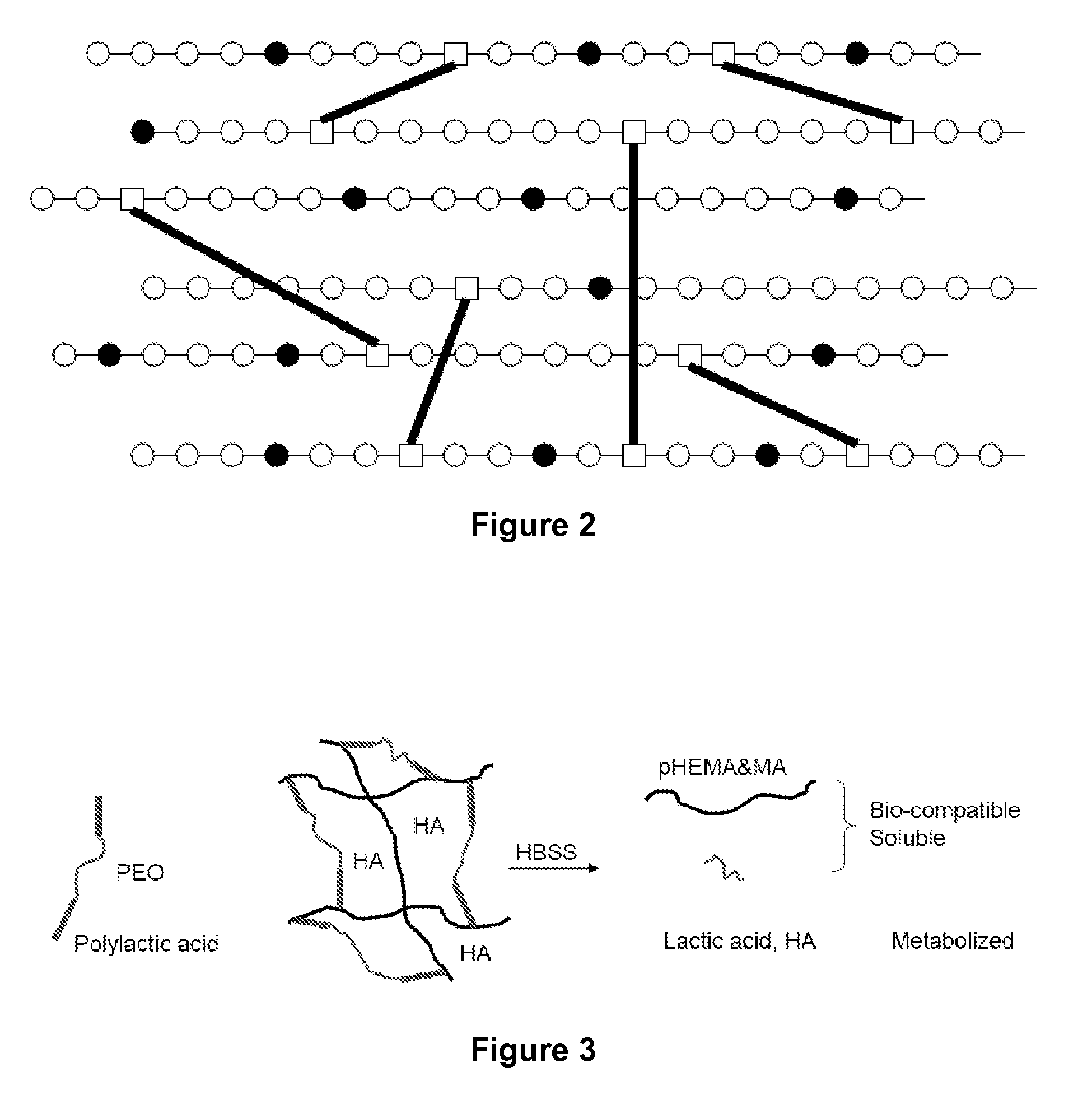Biodegradable synthetic bone composites
a synthetic bone and composite material technology, applied in the direction of impression caps, skeletal/connective tissue cells, prostheses, etc., can solve the problems of not being able to self-repair or adapt to changing physiological conditions
- Summary
- Abstract
- Description
- Claims
- Application Information
AI Technical Summary
Problems solved by technology
Method used
Image
Examples
example 1
Synthesis of a pHEMA / HA Hydrogel Composite
[0075]Lactide monomers are polymerized at both ends of PEG to form polylactic acid (PLA) blocks. The methacrylate polymerization units are capped on both ends of the PLA blocks. The HA mineral is added to the HEMA, MA and the crosslinker mixture, and then is subsequently cured to afford the hydrogel / HA composites, which are biocompatible, degradable and promote bone tissue growth. The synthesis is described in FIG. 1. Other inorganic components such as diverse calcium phosphates or bioactive glasses can be easily added to further manipulate the properties and biodegradation rates of the material. The systemic adjustment of the three reagents would give rise to materials with different decomposition rate and mechanical properties for different applications. (Qiao et al., Intl. J. Pharm., 2005, 294(1-20, 103-112; which is incorporated in its entirety by reference).
example 2
Biodegradation of a pHEMA / HA Hydrogel Composite
[0076]The composite, the synthesis of which is described in Example 1, is biodegradable as shown by degradation in Hank's Buffered Salt Solution (HBSS). PLA is biodegradable. The decomposition path of the hydrogel / HA composite is shown in FIG. 3. All the components of the composite are water soluble. The PLA portion itself is not water soluble, however the PEG portion attached to the PLA portion renders the entire crosslinker soluble. The lactide connection is gradually hydrolyzed in body fluid to render the hydrogel structure soluble. The final products are bio-compatible and soluble pHEMA, pMA and PEG along with the lactic acid and HA. PLA degrades through hydrolysis and metabolization. As the body fluids encounter the implant, water begins to break down the polymer chains. To complete the degradation, the lactic acid molecules are metabolized into CO2 and H2O. If PG is used, in the body, PG is hydrolyzed into glycolic acid.
[0077]Hydr...
example 3
Growth of Cells into a pHEMA / HA Hydrogel Composite
[0079]The growth of cells into biodegraded pHEMA / HA hydrogel composite can be performed using the following method as adapted from S. Foppiano et al. (Bioactive glass coatings affect the behavior of osteoblast-like cells, Acta Biomater. (2007), doi:10.1016 / j.actbio.2007.02.011; in press, e-publication on Apr. 25, 2007), which is incorporated in its entirety by reference.
[0080]The pHEMA / HA hydrogel composite, along with suitable controls, is preconditioned in 4 ml of filter sterilized simulated body fluid (SBF). The ion concentration of SBF is 142 M Na+, 5 mM of K+, 2.05 mM of Ca2+, 1.5 mM of Mg2+, 148 mM of Cl−, 4.2 mM of HCO3−, and 1 mM of HPO42−. The samples are preconditioned for 2 weeks at 37° C., changing the solution after 1 week. Samples are rinsed with phosphate-buffered saline (PBS) prior to cell seeding.
[0081]MC3T3.E1.4 mouse osteoblast-like cells are grown in an incubator at 37° C. and 5% CO2 atmosphere, in α-modified Eagl...
PUM
| Property | Measurement | Unit |
|---|---|---|
| density | aaaaa | aaaaa |
| density | aaaaa | aaaaa |
| particle sizes | aaaaa | aaaaa |
Abstract
Description
Claims
Application Information
 Login to View More
Login to View More - R&D
- Intellectual Property
- Life Sciences
- Materials
- Tech Scout
- Unparalleled Data Quality
- Higher Quality Content
- 60% Fewer Hallucinations
Browse by: Latest US Patents, China's latest patents, Technical Efficacy Thesaurus, Application Domain, Technology Topic, Popular Technical Reports.
© 2025 PatSnap. All rights reserved.Legal|Privacy policy|Modern Slavery Act Transparency Statement|Sitemap|About US| Contact US: help@patsnap.com



